For those with an appetite for extraordinary adventure, Antarctica is the continent that is untouched by human habitation. It’s offering an unique landscape of sparkling ice, raw wilderness, and silence. As you dream of going on this epic journey, a mystic world of unique wildlife, breathtaking landscapes, and unforgettable adventure is waiting for you. In the ultimate guide to Antarctica, Lydie will tell you more about the remarkable experiences that Antarctica has to offer. An important focus in this article is the fundamental mission of preserving nature and wildlife for future generations.
The ultimate guide to Antarctica is written by guest blogger Lydie.

Table of Contents
History of Antarctica
Antarctica is the fifth-largest continent and sometimes called the ‘White Desert’. It’s because of the amount of ice covering the continent. Antarctica holds around 60% of Earth’s fresh water. The lowest natural temperature ever recorded was on the Antarctic Plateau making it the coldest continent on Earth. The isolation and severe climate have made it a place of extreme appeal. Including the daunting challenges for anyone who attempt to uncover its mysteries.
Despite its harsh conditions, Antarctica plays a critical role in the earth’s natural balance. The continent’s vast ice cover are integral to global meteorological and oceanic systems. Antarctica has an influence on seasonal warming and freezing on coastlines around the world. It’s a key region for the study of climate change, where the earliest signs of global warming were observed. This alone makes it´s history a fundamental narrative in our environmental reality.
Early exploration
The history of Antarctica is a story of adventurous humans willing to take huge risks to go on a quest for knowledge. European and American explorers went on risk full expeditions in their attempts to reach this frozen landmass, facing dangerous seas and uncharted territories.
The official discovery of the Antarctic continent is credited to several voyages in the 17th and 18th centuries that recorded its coastline. One important expedition in 1773-1775 was led by British naval officer James Cook. He crossed the Antarctic Circle and circumnavigated the continent and gathered substantial evidence of its existence.
The late 19th and early 20th centuries there was a rise in Antarctic explorations. There was a competition between Norwegian explorer Roald Amundsen and British naval officer Robert Falcon Scott to reach the South Pole. Scott’s tragic journey and subsequent loss of life, contrasts with Amundsen’s triumph, emphasizing the harsh lessons Antarctica teaches about preparation and perseverance.

Antarctica as a scientific research hub
The establishment of research stations started a new phase in the continent’s history. With human presence evolving from short term missions to year-round occupation. The researches done gave us an unparalleled insights into the Earth’s geology, glaciology, and climatology.
From the early 20th century, scientific interest in Antarctica grew. This was the start of permanent research stations. These outposts became not just centres for data collection. They are also communities for international scientists and support staff who work in extreme conditions, conducting experiments that advance our understanding of the planet.
Antarctica has been the birthplace of many critical scientific discoveries. In the 70s the scientists discovered the ozone hole high above the continent. This raised a global alarm and eventually led to the Montreal Protocol. It’s an international treaty to phase out use of ozone-depleting substances. The study of ice cores has given us a detailed record of atmospheric conditions, casting light on historical climate changes.
Antarctica in global politics
Antarctica has an unique status. It’s neither a sovereign nation nor private property. It has been codified through the Antarctic Treaty. This Treaty has ensured the continent is used for peaceful purposes and as an area for international cooperation in scientific research.
Adopted in 1959, the Antarctic Treaty established the framework for the peaceful governance of the continent and has been instrumental in preventing military activity and the exploitation of its resources. It’s a rare example of international diplomacy working effectively for the common good.
Despite the spirit of international cooperation protected in the Treaty, a number of nations claimed territorial allegations in Antarctica. These claims have not been universally recognized, and while they remain dormant, they serve as a reminder of the geopolitical complexities at play.
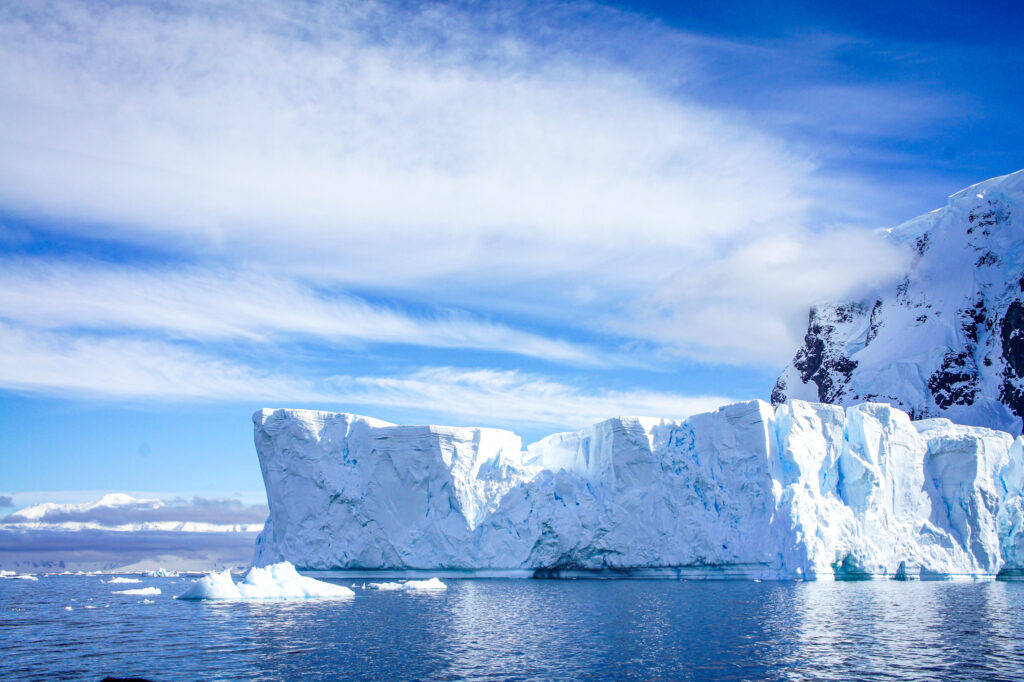
Unique wildlife and ecosystems
Antarctica is not just a place of ice and rock. Its waters and shores have unique diversity of life. Iconic species like the wandering albatross and the emperor penguin characterise the resilience and adaptability necessary to survive in this extraordinary environment.
Antarctic wildlife has evolved with remarkable mechanisms to thrive in this frozen world. Marine species like the Antarctic toothfish and the colossal squid have developed unique physiological traits. The earthbound fauna like mosses and lichens manage to exist on some of the world’s most inhospitable terrain.
Despite its desolation, Antarctica’s ecosystems are fragile and interdependent. Any change in the climate, no matter how isolated, has the potential to disrupt the balance that has taken millennia to establish. The continent’s wildlife is vulnerable but resilient and serves as a tender reminder of nature’s adaptability and its profound capacity for survival.
Challenges and conservation efforts
While the Antarctic Treaty has provided a framework for the continent’s protection, it still faces significant environmental challenges. The threat of climate change emerges, and the delicate Antarctic ecosystem is increasingly at risk from human activities.
The most significant threat to Antarctica is undoubtedly climate change. Rising temperatures and changing weather patterns not only affect the continent’s ice cover but also have potentially devastating effects on its unique ecosystems and wildlife.
Remarkable efforts are underway to preserve Antarctica for future generations. International organizations and environmental groups are advocating for marine protected areas, and countries are increasingly recognizing the importance of sustainable practices in their Antarctic activities. The adoption of robust environmental guidelines and the monitoring of human impact on the continent are important in ensuring its long-term conservation.
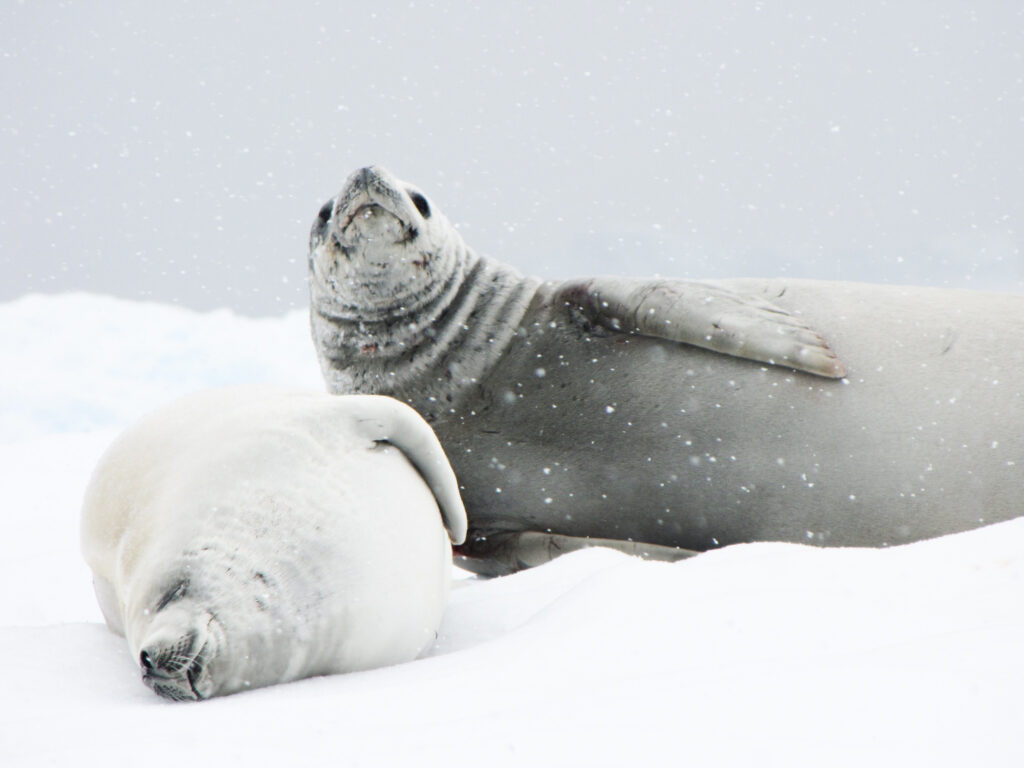
Unique wildlife encounters
Antarctica is the coldest, driest, and windiest continent on the planet. It has some of the most unique biodiversity, living creatures that aren’t just surviving but thriving in these extreme conditions. In this paragraph I will tell you more about the possible wildlife encounters.
Penguins: adorable and resilient
Penguins are perhaps the most iconic symbol of wildlife in Antarctica. They are a charismatic group of marine birds known for their tuxedo-like feathers and humorous behaviour. They are perfectly adapted to the marine environment, often swimming into the icy waters to hunt for fish. Penguins are a species that represents immense resilience. Despite the harsh climate and the presence of predators, penguin colonies continue to thrive in various parts of the continent.
The Adélie penguins, for instance, are expert builders. They are often establishing nests in some of the harshest conditions. They are unique among penguin species for being very aggressive about defending their territories. The Emperor penguins is the largest penguin species. They are able to dive to more than a thousand feet to catch their prey. Their colonies have become the subject of admiration and fascination for naturalists all over the world. Their colonies are giving us a small glimpse into their lives where they huddle together for warmth and protection.
Seals: masters of survival
Antarctica is home to a variety of seal species. Each specie has their own special methods of survival. Weddell seals are capable of diving to great depths up to 600 meters. They can remain underwater for up to 82 minutes. It is a testament to their physiological adaptability to cold and lack of oxygen.
Leopard seals are the top predators in Antarctica’s marine ecosystem. They have a fearsome reputation, able to crush penguins and smaller seals with their powerful jaws. Yet, these sleek predators are also known for their curious and playful nature .Observing seals in their natural environment is a humbling experience, providing insight into their vital role in the Antarctic food chain.
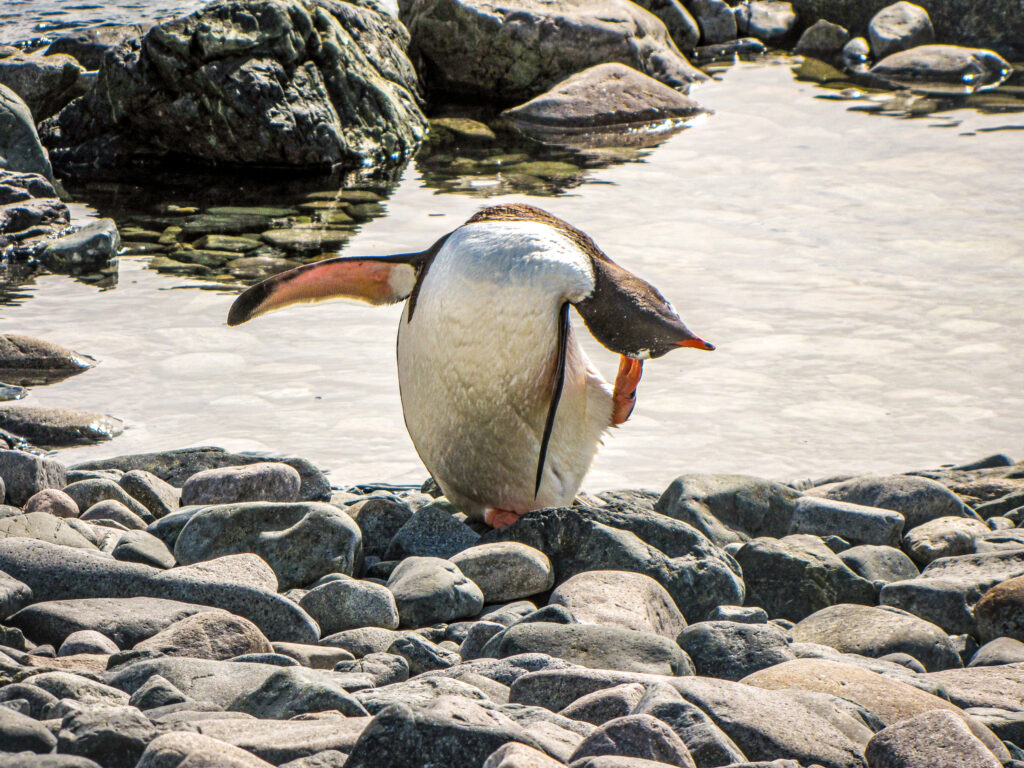
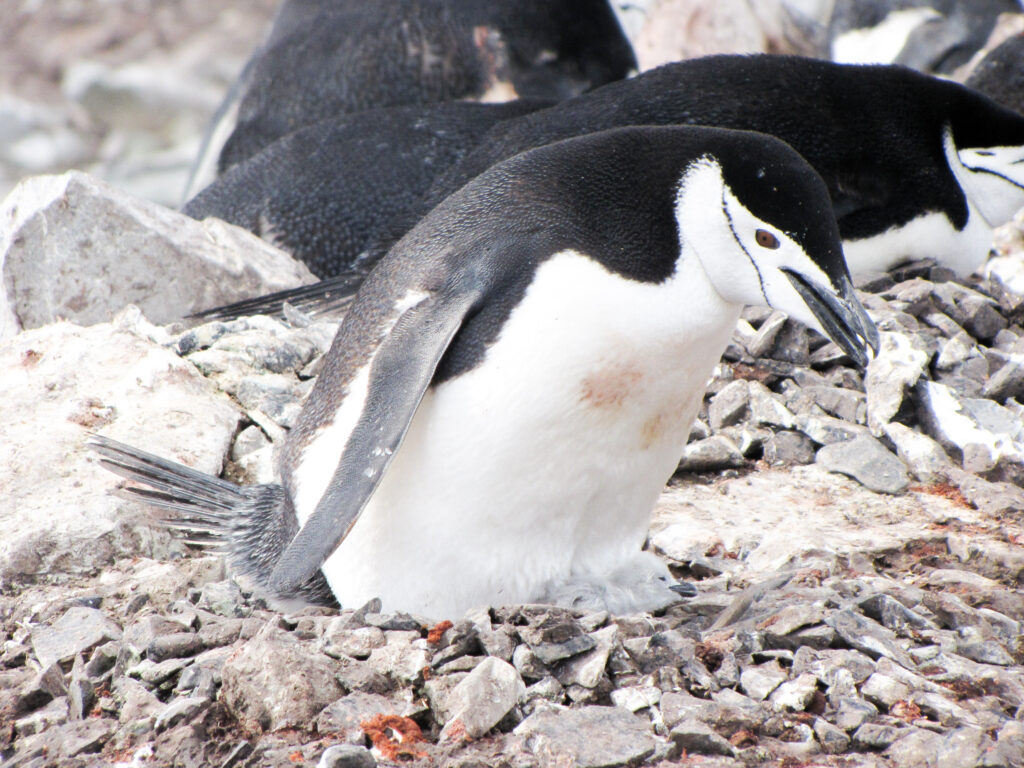
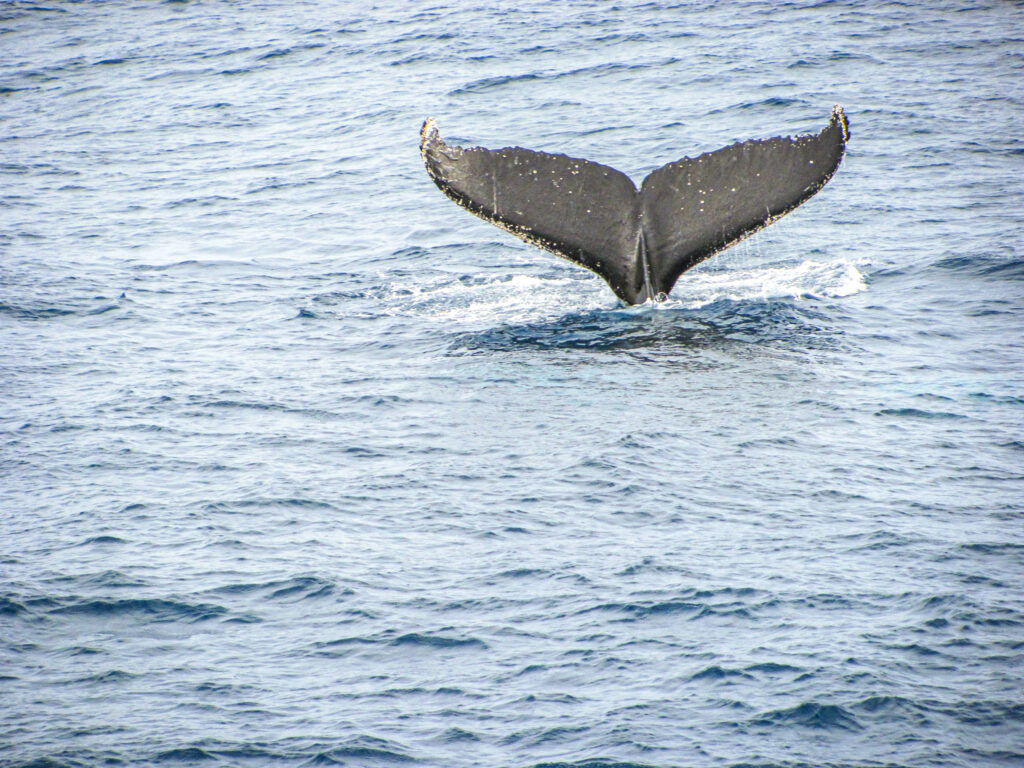

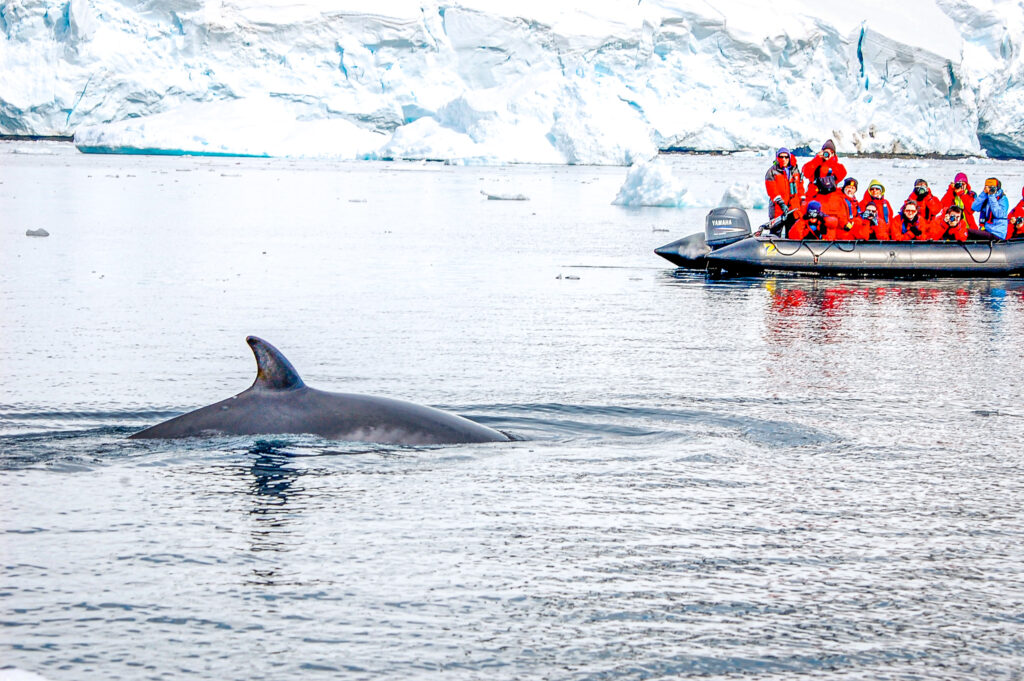
Whales: giants of the ocean
The ocean around Antarctica is the feeding ground for some of the most wondrous creatures in the animal kingdom, the whales. The magnificent sights of humpback and minke whales breaking the ocean’s surface are common in these southern waters. The whales are migratory giants, undertaking thousands of miles each year to feed in nutrient-rich Antarctic waters.
Unfortunately, many whale species were pushed to the brink of extinction due to commercial whaling. Strict conservation measures have allowed populations to slowly recover.
Birds: soaring the Antarctic skies
Despite the continent’s extreme conditions, Antarctica’s skies host an array of seabird species that are just as vital to the ecosystem as their land and sea-dwelling counterparts. Albatrosses, with their impressive wingspans, are some of the most extraordinary of these species.
Spectacled petrels, snow petrels, and Antarctic prions are also among the many bird species that call Antarctica home. They are adept at catching the cold, strong winds that sweep across the Southern Ocean, and are important scavengers, helping to maintain the delicate balance of the Antarctic ecosystem.
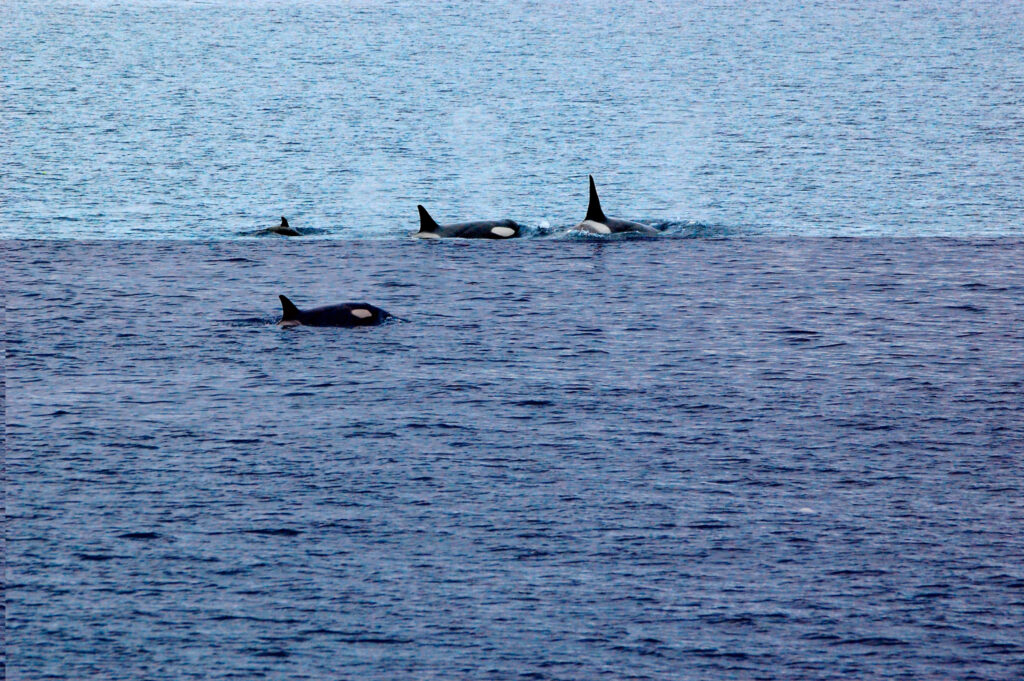
Conservation Efforts
Antarctica is one of the world’s last great wildernesses, largely untouched by human interference. Unfortunately it is not immune to the impacts of climate change and overfishing. The fragile polar ecosystems are under threat, and it is crucial to implement measures to protect them.
Conservation initiatives, such as the establishment of marine protected areas, scientific research, and wildlife monitoring, aim to safeguard the future of Antarctic wildlife. The work of organizations like the Antarctic and Southern Ocean Coalition (ASOC) and the Commission for the Conservation of Antarctic Marine Living Resources (CCAMLR) is of great importance in ensuring that the continent’s ecosystem remains healthy and intact.
Exploring Antarctica
For those who wish to witness this spectacle of nature firsthand, expeditions to Antarctica offer a once-in-a-lifetime opportunity to experience the continent’s beauty up close. Travelling to this remote corner of the world is not without its challenges, but the chance to see its wildlife in their natural environment is a reward that’s hard to match.
There are several popular destinations and wildlife hotspots, such as the Antarctic Peninsula, South Georgia, and the South Orkney Islands, where visitors can observe diverse wildlife. Visitors must be mindful of the strict guidelines and regulations in place to ensure minimal impact on the environment and its inhabitants.
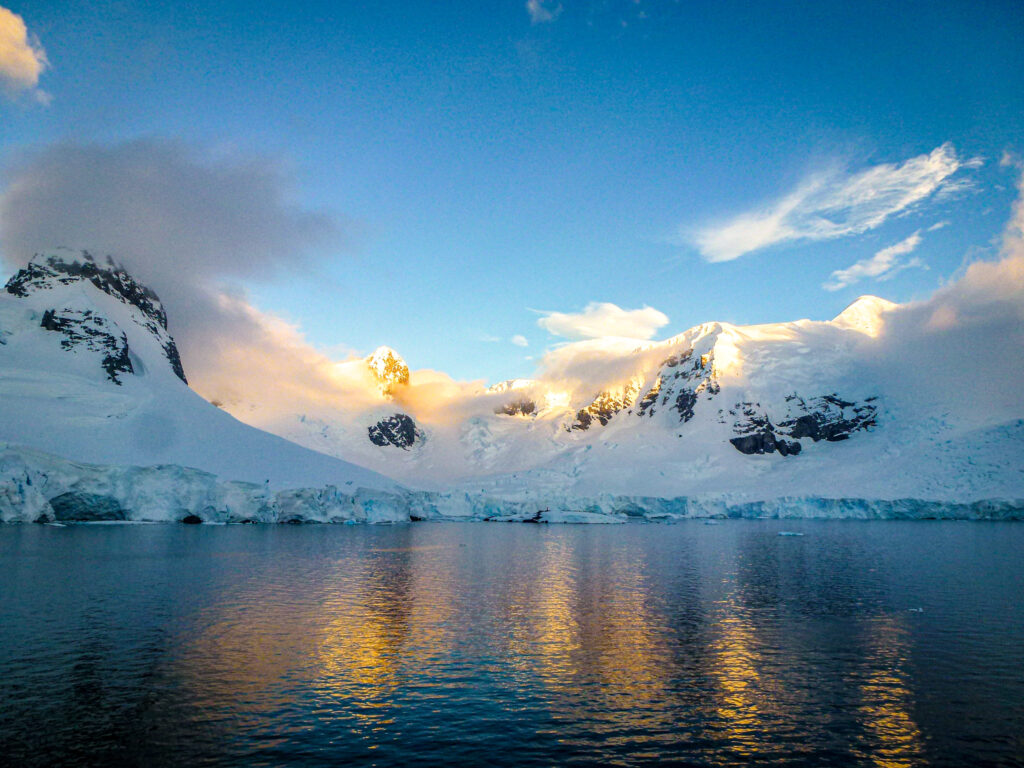
Tips for planning a trip to Antarctica
Planning a trip to Antarctica requires careful consideration and preparation. Here are some tips for those looking to make the journey.
Research and preparation
Antarctica’s climate is one of the harshest on Earth, characterized by long, cold winters and short, cool summers. Temperatures during the summer can range from just below freezing to 14°C (57°F) along the warmer parts of the peninsula. It’s not unusual to experience winds that can reach hurricane-force. Prepare for subzero temperatures by layering your clothing to stay warm. Research climate trends for the time of year you plan to visit and pack accordingly.
Research available tours and expedition options
The only way to visit Antarctica is through an organized tour or expedition. Some voyages focus on wildlife photography, others on scientific learning, and still more on extreme adventure sports. Research the many tour operators available, considering factors such as staff experience, vessel safety, and the overall itinerary.
Obtain necessary permits and visas
Depending on your nationality and the type of expedition you join, you may need to obtain specific permits or visas. Work with your chosen tour operator to ensure you have all necessary documentation well in advance.
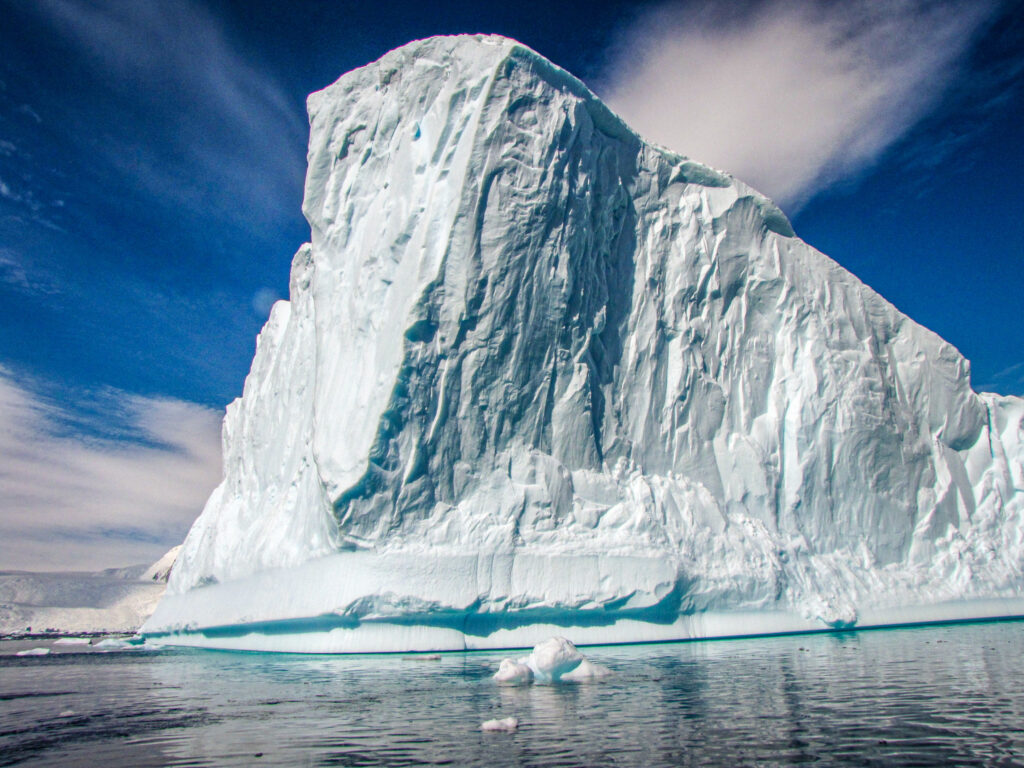
Choosing the right time to visit
Antarctica’s tourism season runs from November to March, aligning with the continent’s summer. Peak season generally results to higher prices and more tourists. Off-peak months might mean better deals, but with significantly different experiences due to the harsher weather conditions and shorter daylight hours. Warmer temperatures during the summer months can result in greater ice melt, which can affect navigational routes. The best visibility conditions are usually found in the colder, drier months when the cold air traps moisture and reduces the risk of snowfall.
Wildlife spotting opportunities
Different times of the year offer varying wildlife spotting opportunities. Visit in December and January to witness the impressive breeding colonies of penguins and seals. Or visit in February and March to observe the whales that have migrated to the region for the abundant marine life.
Packing Essentials
Dress in layers to manage your body temperature effectively. Wool and synthetic materials are ideal for the cold, while waterproof and windproof outer layers will keep you dry and protected from the elements. Depending on your planned activities, you might need specialized gear such as ice clamps for hiking or flotation jackets for sea excursions. Check with your tour operator for a comprehensive list of recommended equipment. Pack and equip yourself with an emergency kit tailored to Antarctic conditions. This includes items like high-calorie foods, a satellite phone, and a first aid kit equipped for extreme cold.
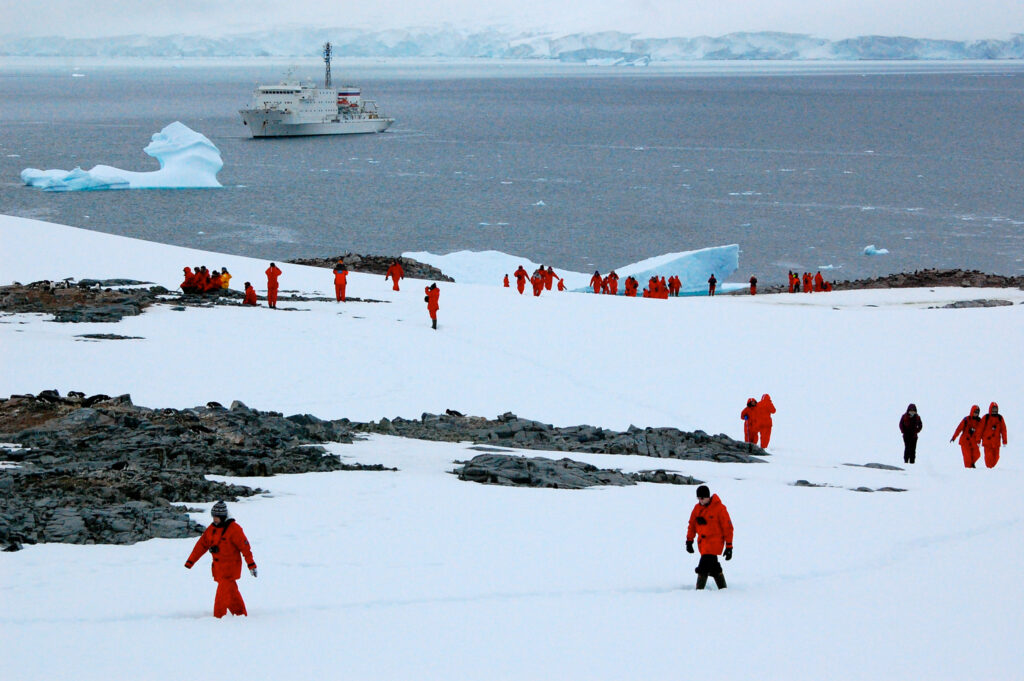
Health and Safety
Ensure you’re up-to-date on all vaccinations. Conditions like heart problems can be aggravated by the extreme cold and altitude, so it’s wise to disclose your travel plans to your healthcare provider. Antarctic travel insurance is non-negotiable due to the remote nature of the continent. Make sure your policy covers medical evacuation, as well as trip cancellations and delays that can be quite common given the unpredictable weather.
Attend pre-departure briefings provided by your tour company. Familiarize yourself with safety protocols, including how to respond in the event of wildlife encounters or if you need to be evacuated.
Accommodation and transportation
Accommodations can range from cozy cabins on smaller vessels to more luxurious suites on larger cruise ships. While comfort is essential for such a demanding trip, the focus should be on the vessel’s stability and safety in frigid waters. Most travellers to Antarctica will embark on a cruise from either the tip of Latin America or New Zealand. These vessels differ in size, speed, and amenities, so choose one that aligns with your preferences and budget.
The journey to Antarctica is long and complex, involving multiple flights, sea crossings, and possibly landings. Plan details like transport to and from the port, and any pre- or post-voyage accommodation you might need.
Activities and excursions
Antarctica is rich in experiences, from visiting historic research stations to witnessing the famous Lemaire Channel. You can also partake in activities like kayaking among icebergs or even camping overnight. The continent is home to a range of wildlife, including penguins, seals, and whales. Approach these animals with respect to ensure the safety of both you and the creatures that call Antarctica home. For the adrenaline junkie, options like ice climbing and polar plunges (for the very brave) are available. These are thrilling ways to connect with the extremities of the Antarctic environment.
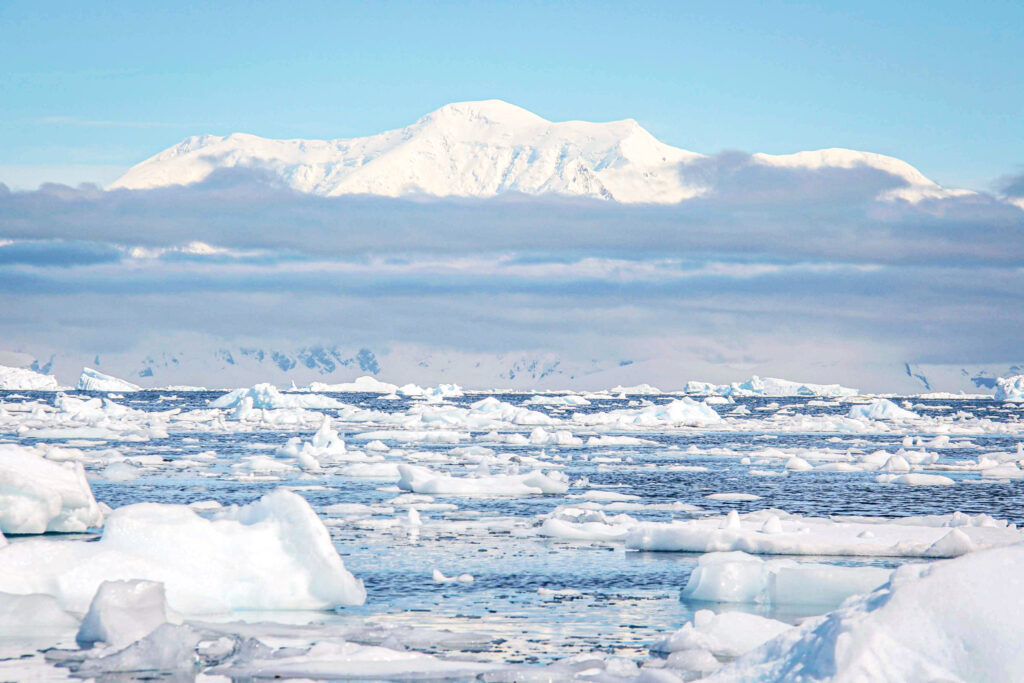
Sustainable tourism in Antarctica
For those adventurous souls and nature lovers, Antarctica is the embodiment of unparalleled beauty and wonder. It represents a journey into the world’s most unspoiled and desolate continent, with landscapes that are as dramatic as they are untouched. But with this pristine beauty comes great responsibility, especially when it comes to tourism. The ultimate guide to Antarctica would not be complete without mentioning the sustainable tourism and practices for travellers.
As global travel grows, it’s imperative that we re-evaluate our impact on every corner of the planet. The footprint left by expeditions to Antarctica is a crucial marker of our understanding and commitment to preserving Earth’s last wilderness. In this intensive dialogue, I delve into the difficulties of sustainable tourism practices in Antarctica,
A unique and fragile ecosystem
Antarctica is like nowhere else on Earth. It is the coldest and windiest of the Earth’s continents, and it hosts the highest average elevation. The continent’s unique topography and extreme climate have fostered an ecosystem that supports an array of life, some of which are found nowhere else.
Its significance extends beyond its beauty; Antarctica plays a important role in the regulation of the Earth’s climate. The Southern Ocean that surrounds the continent is a vast reservoir of carbon and home to delicate marine life dependent on the stability of the region.
The impact of tourism on Antarctica
Antarctic tourism has surged over the last few decades, with visitors eager to experience the land of icebergs and penguins. This increase in traffic, while still relatively modest in terms of overall global tourism, has raised concerns about the impact on the environment and local wildlife. In the last 30 years, the number of tourists visiting the region has jumped significantly, leading to fears about the introduction of non-native species and the potential for pollution due to ships travelling to and from the continent.
The dramatic growth in popularity has sparked unease among environmentalists who fear that Antarctica’s delicate ecosystem is under threat. There are worries about accidental introductions of invasive species, disturbance to wildlife, and the possibility of fuel spills or other pollution events.
Sustainable Tourism Initiatives
In response to these concerns, a range of initiatives have been developed to ensure that tourism in Antarctica is as sustainable as possible. These initiatives are designed to protect the environment and minimize the impact on the continent’s unique flora and fauna.
One key aspect of sustainable tourism in Antarctica is the careful regulation of tourist activities. Tour operators must adhere to strict guidelines that govern how close they can approach wildlife and where they can land passengers. Another crucial measure is the control of visitor numbers and the duration of their stays. These restrictions are intended to prevent the overuse of specific sites and to limit the overall environmental impact of tourism.
Strict regulations are also in place to manage waste and prevent pollution. All waste generated by tourists must be removed from the continent, and ships operating in the region are required to meet stringent environmental standards.
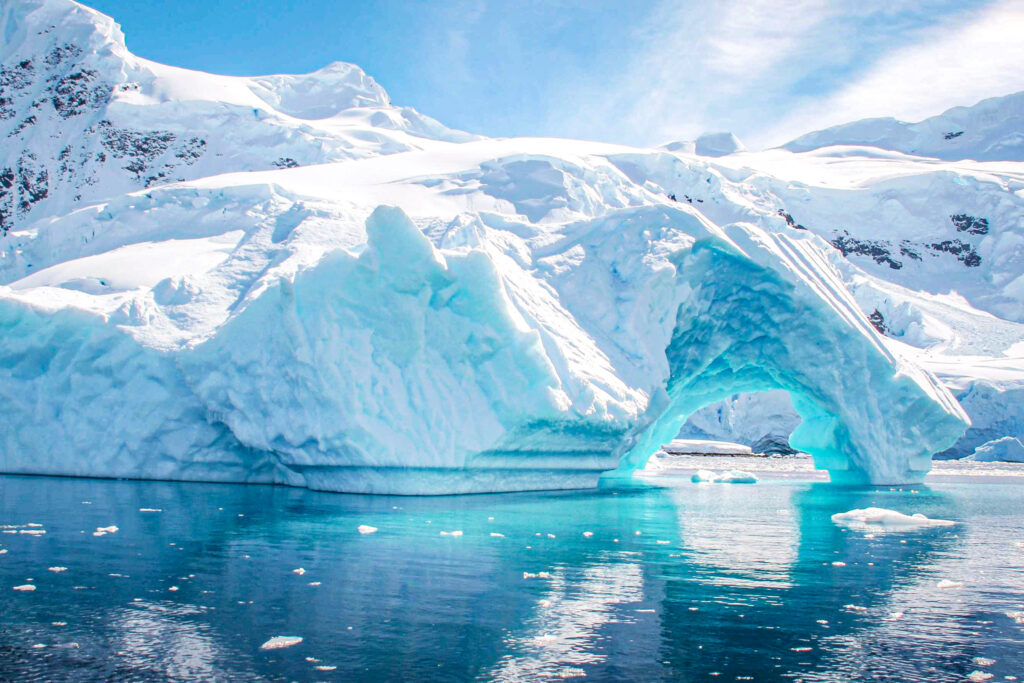
Responsible travel tips for Antarctica
For the traveller visiting Antarctica, there are a number of steps that can be taken to ensure a responsible and sustainable visit.
- Choosing eco-friendly tour operators: Selecting a tour operator that has a strong commitment to sustainability is the first step. Look for companies that are accredited by organizations like the International Association of Antarctica Tour Operators (IAATO). Companies like Quark Expeditions and Oceanwide Expeditions have been at the forefront of sustainable tourism in Antarctica. They work closely with both IAATO and the Scientific Committee on Antarctic Research (SCAR) to ensure their operations are as eco-friendly as possible.
- Minimizing your waste and carbon footprint: When preparing for a trip to Antarctica, pack carefully and with sustainability in mind. Minimize single-use items, opt for rechargeable batteries, and follow the lead of the operator in reducing and recycling waste.
- Respecting wildlife and natural habitats: The allure of Antarctic wildlife is undeniable, but it’s important to observe from a respectful distance. Always follow the guidance of experienced expedition leaders and never approach or disturb animals or nesting sites.
As travellers, we have the power to choose how we engage with the world. Sustainable tourism in Antarctica is about making choices that preserve its unique heritage for future generations. By adopting the principles of responsible travel, we can be part of the solution, ensuring that Antarctica remains unspoiled and a testament to the global community’s ability to protect our shared planet.
Virtual picture tour of Antarctica
Looking to take a virtual trip to Antarctica? You’ve come to the right place! In this post, Lydie will show you the wonders of Antarctica through a series of stunning pictures.
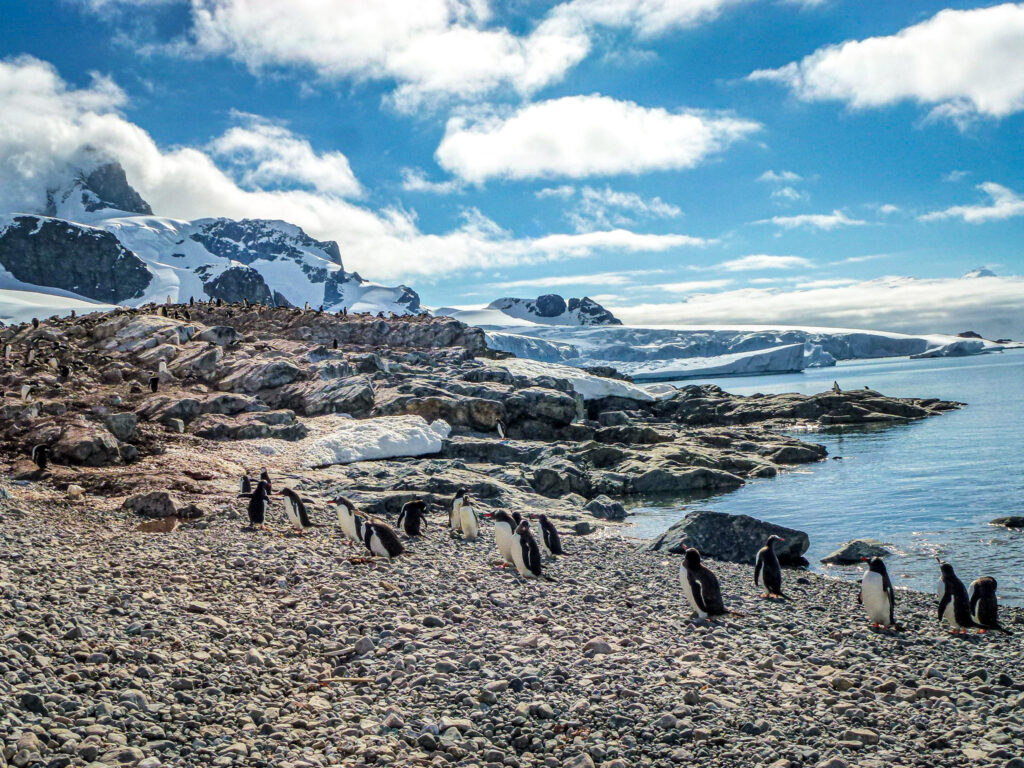


This Post Has 2 Comments
Heel indrukwekkend en de foto’s zijn prachtig
Hi Anita,
Ja, Lydie heeft er een fantastisch artikel van gemaakt.
Gr Adriana